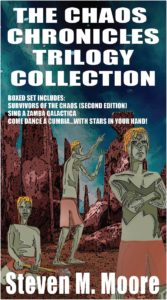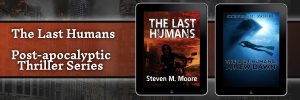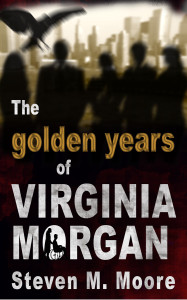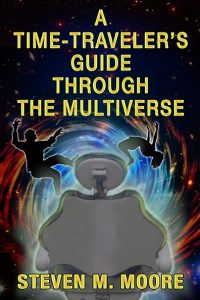Aging…
Compared to most other animal species, human beings have long lives, although the verdict is still out whether elephants and whales can compete with us (studying them in captivity can bias things one way or the other). But aging and death is the bane of all creatures, great and small, both going hand in hand with evolution because Mother Nature doesn’t depend on species’ dying or the old and infirm weaned out in predator-prey systems or violence and conflict. It’s not surprising that aging is a theme in much of literature, sci-fi in particular, as well as its opposite, longevity.
Modern science has extended lives (artificially perhaps?) to the point where people often live longer than Mother Nature ever intended. In medieval times, lifespans were more like forty years, not seventy or eighty, and cancer wasn’t even in the medical taxonomy because people wrote it off as “death by natural causes.” In brief, we were probably “designed” by evolution (to pacify those “intelligent design” idiots) to have shorter lifespans, but modern medicine has pushed the limits.
So sci-fi often asks the obvious question: Can our lifespans be extended even further?
This question must be asked in some sci-fi stories simply because the distances between stars, even between the planets in our own solar system, are so great. Brian Aldiss and others answered that question with “generation ships” that just took our earthly lifespan limitations and put them onboard these long-haul starships, an obvious cop-out. A similar alternative is to employ long-term hibernation techniques, yet to be discovered. A more reasonable variation (because the science is already there) considered by James Hogan and others had these same long-haul ships run by androids taking care of frozen ova, sperm, and embryos until the end of the journey (an improvement to be sure because that requires less space for human beings and allows more room for supplies and equipment)—the last two options are also cop-outs because the humans at the end of the journey still have the same lifespan limitations.
 Of course, FTL is another literary alternative, from Isaac Asimov’s “jumps” to Star Trek‘s warp drives. The idea always comes down to avoiding those vast distances in some mathematical and physical manner (wild tech bordering on the impossible even if wormholes really exist). All the FTL variations allow sci-fi authors to get beyond the aging and distance limitations and on with their stories, effectively minimizing the actual journeys.
Of course, FTL is another literary alternative, from Isaac Asimov’s “jumps” to Star Trek‘s warp drives. The idea always comes down to avoiding those vast distances in some mathematical and physical manner (wild tech bordering on the impossible even if wormholes really exist). All the FTL variations allow sci-fi authors to get beyond the aging and distance limitations and on with their stories, effectively minimizing the actual journeys.
So…we have two extremes: For Aldiss and Hogan, we might say that the journey is the story, or an important part of it; for Asimov and others, the story is still planet bound. Of course, sci-fi stories don’t necessarily fit on the linear spectrum running between the two extremes. Hugh Howey’s Wool, for example, takes place on a future Earth! (As do many dystopian and post-apocalyptic sci-fi stories. Howey certainly wasn’t the first!)
 Looking over my own sci-fi oeuvre, I can state that I’ve covered that entire spectrum, though, and more. “The Chaos Chronicles Trilogy,” for example, goes from Aldiss to Asimov. “The Last Humans” novels take place on Earth, as do the novels in the “Clones and Mutants Trilogy.” The first novel in the last series, though, focuses on another solution to aging in a sense, and that solution all starts with the arch-villain Vladimir Kalinin.
Looking over my own sci-fi oeuvre, I can state that I’ve covered that entire spectrum, though, and more. “The Chaos Chronicles Trilogy,” for example, goes from Aldiss to Asimov. “The Last Humans” novels take place on Earth, as do the novels in the “Clones and Mutants Trilogy.” The first novel in the last series, though, focuses on another solution to aging in a sense, and that solution all starts with the arch-villain Vladimir Kalinin.
 Ordered by publication dates, Vladimir first appears in The Midas Bomb, the first novel in the “Detectives Chen and Castilblanco” series; and he works his way into more of those novels, the “Esther Brookstone Art Detective” series, The Golden Years of Virginia Morgan (a transition novel) and “The Phantom Harvester,” the “Clones and Mutants Trilogy,” and Soldiers of God (also a transition novel, to the “Chaos Chronicles:). He’s my most long-lived character, and the reason for that is his perfection and use of cloning. (That only becomes fully apparent in Full Medical, my very first novel). I can only hint at his strategy as I finish the “Esther Brookstone” series that takes place decades earlier. Of course, he’s such a complex character that his long life is less about that strategy than what he does with longevity. That strategy, though, is a lot more medically possible than the ones previously mentioned. “The Chaos Chronicles” continues that extended “future history” timeline, by the way, but apparently human beings at that time weren’t willing to use cloning. The third novel in that series does revisit the concept, though, as part of a madman’s dream of having identical soldiers with ESP powers!
Ordered by publication dates, Vladimir first appears in The Midas Bomb, the first novel in the “Detectives Chen and Castilblanco” series; and he works his way into more of those novels, the “Esther Brookstone Art Detective” series, The Golden Years of Virginia Morgan (a transition novel) and “The Phantom Harvester,” the “Clones and Mutants Trilogy,” and Soldiers of God (also a transition novel, to the “Chaos Chronicles:). He’s my most long-lived character, and the reason for that is his perfection and use of cloning. (That only becomes fully apparent in Full Medical, my very first novel). I can only hint at his strategy as I finish the “Esther Brookstone” series that takes place decades earlier. Of course, he’s such a complex character that his long life is less about that strategy than what he does with longevity. That strategy, though, is a lot more medically possible than the ones previously mentioned. “The Chaos Chronicles” continues that extended “future history” timeline, by the way, but apparently human beings at that time weren’t willing to use cloning. The third novel in that series does revisit the concept, though, as part of a madman’s dream of having identical soldiers with ESP powers!
And that is the fundamental question, isn’t it? How ethical is it to want to live forever? So far in real life, not sci-fi, we don’t have to answer that question, although that need might be right around the corner!
***
 Comments are always welcome. (Follow the rules listed on my “Join the Conversation” web page. If you don’t, your comment goes to spam.)
Comments are always welcome. (Follow the rules listed on my “Join the Conversation” web page. If you don’t, your comment goes to spam.)
A Time Traveler’s Guide Through the Multiverse. Enrico Fermi wasn’t the last physicist who was both an experimental and theoretical genius, but Professor Gail Hoff will never receive the Nobel Prize. She goes time-traveling through several universes of the multiverse, never to return to her little lab outside Philly. Jeff Langley, her jack-of-all-trades electronics wizard, accompanies her. Their escapades, both amorous and adventurous, make this sci-fi rom-com a far-out road-trip story filled with dystopian and post-apocalyptic situations, first encounter, robots and androids—all that and more await the reader who rides along.
Around the world and to the stars! In libris libertas!
